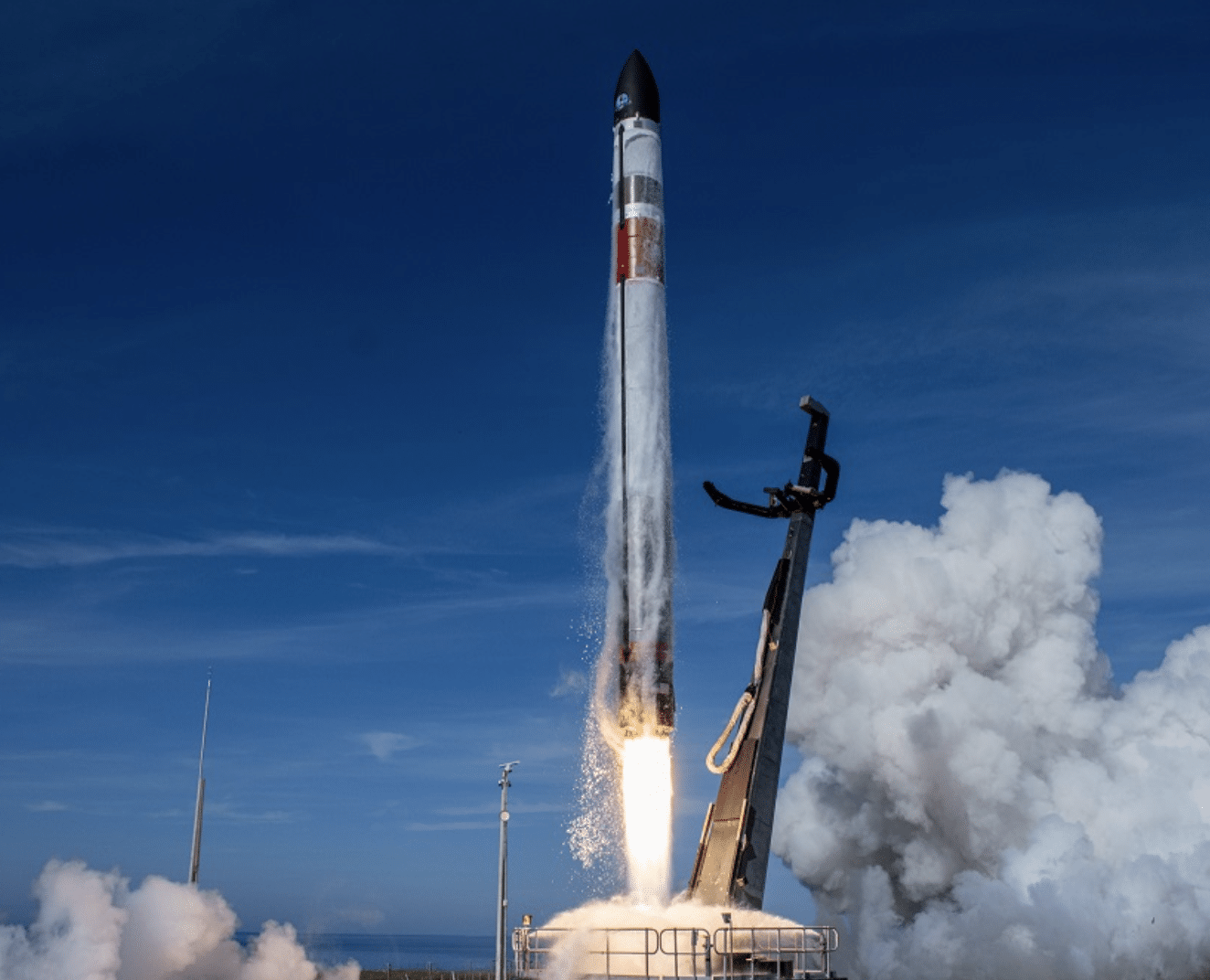Rocket Lab deploying 34 satellites to orbit Monday, May 2. Rocket Lab has now deployed a total of 146 satellites to orbit with the Electron launch vehicle.
The mission also saw Rocket Lab complete a mid-air capture of the Electron booster with a helicopter for the first time. After launching to space, Electron’s first stage returned to Earth under a parachute. At 6,500 ft, Rocket Lab’s Sikorsky S-92 helicopter rendezvoused with the returning stage and used a hook on a long line to capture the parachute line. The mid-air capture is a major milestone in Rocket Lab’s pursuit to make Electron a reusable rocket to increase launch frequency and reduce launch costs for small satellites. After the catch, the helicopter pilot detected different load characteristics than previously experienced in testing and offloaded the stage for a successful splashdown. partially pulled off the feat Tuesday as it pushes to make its small Electron rockets reusable. So, after briefly catching the spent rocket, a helicopter crew released it and it dropped into the Pacific Ocean. There it was recovered by a waiting boat. The recovery vessel will transport the stage back to the production complex for analysis and assessment for re-flight as planned.
The mid-air capture comes after successful recovery operations from Rocket Lab’s 16th, 20th, and 22nd missions, which saw Electron’s first stage execute a controlled ocean splashdown before being returned to Rocket Lab’s production complex. Like those missions, a reaction control system re-oriented the first stage to an ideal angle for re-entry during the “There And Back Again” mission, enabling the stage to survive the incredible heat and pressure during its descent back to Earth. A drogue parachute was deployed to increase drag and to stabilize the first stage as it descended, before a large main parachute was deployed in the final kilometers of descent. “There And Back Again” is the first time a helicopter catch attempt was introduced to recovery operations and today’s mission will inform future helicopter captures.
“Bringing a rocket back from space and catching it with a helicopter is something of a supersonic ballet,” said Rocket Lab founder and CEO, Peter Beck. “A tremendous number of factors have to align and many systems have to work together flawlessly, so I am incredibly proud of the stellar efforts of our Recovery Team and all of our engineers who made this mission and our first catch a success. From here we’ll assess the stage and determine what changes we might want to make to the system and procedures for the next helicopter catch and eventual re-flight.”
The “There And Back Again” mission launched from Pad A at Rocket Lab’s Launch Complex 1 on New Zealand’s Mahia Peninsula at 10:49 am NZST, 3 May 2022, deploying satellites for Alba Orbital, Astrix Astronautics, Aurora Propulsion Technologies, E-Space, Spaceflight, and Unseenlabs. The mission brings the total number of satellites launched by Rocket Lab to 146. Among the payloads deployed were satellites designed to monitor light pollution, demonstrate space junk removal technologies, improve power restraints in small satellites, validate technology for sustainable satellite systems that can avoid collisions with untrackable space objects, enable internet from space, and build upon a maritime surveillance constellation.
